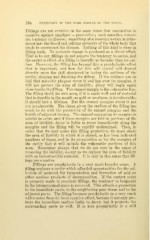Page 332 - My FlipBook
P. 332
194 PATHOLOGY OF THE HARD TISSUES OF THE TEETH. ;
Fillings are not curative in the same sense that vaccination is
curative against smallpox — preventive ; such remedies remove
the tendency to disease ; something of a material nature is intro-
duced into the blood and cellular elements of the whole body that
tends to counteract the disease. Nothing of this kind is done in
filling teeth. Xo systemic change is produced as a direct effect.
That is to say, fillings do not remove the tendency to caries, and
the curative effect of a filling is literally no broader than its out-
line. However, the filling has beyond this a prophylactic effect
that is important, and how far this will extend will depend
directly upon the skill displayed in laying the outlines of the
cavity, shaping and finishing the filling. If the outlines are so
laid that microbic plaques cover it and lap over its margins, it
will not protect the area of liability; decay will begin again
close beside the filling. The enamel margin is the vulnerable line.
The filling itself, its own area, if it is made well and of material
that is durable in the mouth, as gold or amalgam, is invulnerable
it should last a lifetime. But the enamel margins about it are
not invulnerable. The shape given the surface of the filling has
much to do with the protection of its enamel margins and the
health of adjacent tissues. The enamel composing its margins is
soluble in acids, and if these margins are laid in portions of the
area of liability, decay is liable to recur immediately along the
margins and the filling will be rapidly undermined. Then, in
order that we may make this filling protective, we must study
the area of liability in which it is placed, as has been indicated
numbers of times, and in its preparation so lay the margins of
the cavity that it will include the vulnerable portions of this
area. Remember always that we do not cure in the sense of
removing the liability, except as we replace the area of liability
with an indestructible material. It is only in this sense that fill-
ings are curative.
Fillings are prophylactic in a very much broader sense. A
filling replaces a cavity which afforded opportunities for the col-
lection of material for fermentation and formation of acid or
other noxious products of decomposition. If the contact point
is properly made in proximal fillings, the tendency to lodgment
in the interproximal space is removed. This affords a protection
to the immediate parts, to the neighboring gum tissue and to the
adjacent parts. The filling becomes prophylactic in a very much
wider sense than the local curative effect, because it not only pro-
tects the immediate surface liable to decay, but it protects the
surrounding parts as well. It is also prophylactic in a still


